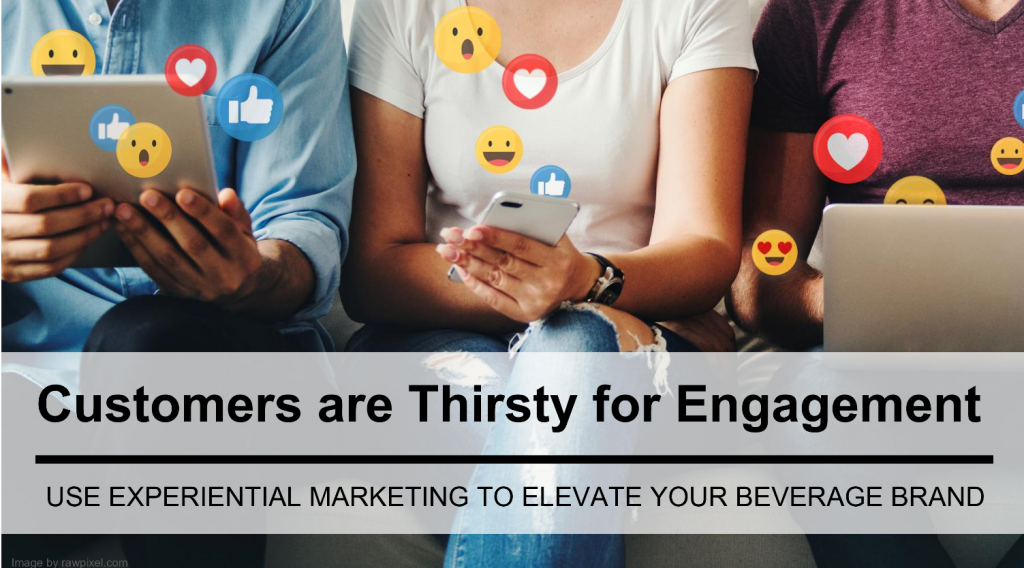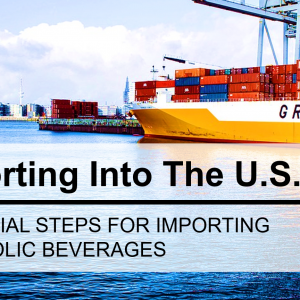If we’ve learned anything during the pandemic, it’s the importance of relationships. Beverage brands relied on their connections with customers to guide their decisions and messages as they navigated the turbulent waters of uncertainty. But building relationships in an increasingly busy, changing, and disjointed marketing environment isn’t easy. One tool that holds a lot of promise in the evolving landscape of customer relationship building is experiential marketing.
What is experiential marketing?
Experiential marketing focuses on connecting consumers with a brand by providing sensory, emotional, cognitive, and rational values. The goal is to deliver a memorable and unique experience that immerses and engages consumers. That experience can be in the form of an in-person event or interactive retail display, but it can also be an interaction on social media or in virtual reality (VR).
Benefits of Experiential Marketing
However, a brand chooses to implement it, experiential marketing brings several compelling business benefits:
Stand Out
The creativity implemented through experiential marketing helps beverage brands stand out from the crowd.
Example: Red Bull is a pro at using experiential marketing to differentiate itself in the market. What other energy drink helped set the world record for highest skydive? The Red Bull Stratos campaign had over 8 million viewers, the highest viewing traffic of any live stream ever broadcast on YouTube.
Build Social Shares
Many customer experiences lend themselves to social sharing. You can increase the social media impact of your experiences by asking participants to share directly or by designing the interaction to encourage the use of social channels.
Example: French Champagne house Veuve Clicquot drew a flurry of social media activity with their installation of a life-size “snow globe” and Champagne bar.
Create Moments of Wow
With experience marketing, brands can combine an acute knowledge of their target market with imagination to create impactful, memorable moments that drive brand affection and brand loyalty.
Example: Lipton Iced Tea created memorable moments for morning commuters when it set up a giant yellow waterslide in the middle of London at 7:45 a.m. on a Friday. Lipton connected the brand to the unexpected excitement by handing out free samples to promote their #BeADaybreaker campaign.
Share Your Brand Mission and Values
Experiential marketing is another tool for brands to bring their mission and vision to life in consumers’ eyes, hearts, and minds. Companies can create opportunities to go beyond talking about the impact they’re making and show it.
Example: In 2019, State Farm presented its Neighborhood of Good® experience at eight music festivals. The brand activation generated support for access to music education for underserved students. State Farm converted every interaction into a donation for Notes for Notes, a nonprofit that designs, equips, and staffs after-school recording studios inside Boys & Girls Clubs.
Attract Media Opportunities
A creative experiential marketing campaign will gain the attention of consumers and a variety of media outlets looking to share relevant, visual stories with their audiences.
Example: Veev, a company that makes all-natural acaí berry spirits, ran a campaign that urged consumers to “cheat on vodka.” The brand used digital videos and display ads, outdoor ads, and a Twitter-activated vending machine that distributed prizes to users when they “Tweet To Cheat on Vodka.” The campaign gained the company earned ink in a variety of industry and consumer publications.
Take Advantage of Targeting
Targeted experiential marketing campaigns can help brands attract and gain traction with specific market segments. Brands can dial in and refine the customer experience with live feedback from current and future customers.
Example: In 2017, Mike’s Hard Lemonade pivoted its marketing strategy to target millennial males. The company introduced the “Drink on the bright side” campaign designed to bring together sensory experiences that delivered joy, laughter, and good times.
Generate Leads and Sales
But, can businesses rely on experiential marketing to deliver ROI? The data points to yes.
Example: An EventTrack survey showed that 74 percent of people had a more positive brand perception after a branded event experience, 65 percent purchased the promoted product or service. As many as 70 percent of participants ended up becoming regular customers.
Where to Start
As with any marketing strategy, success lies in the details. The more your plan aligns with your company’s value proposition and your ideal customer, the more likely you will succeed. In addition to being on-brand, the best experiential marketing campaigns are focused on and measured by specific goals. They’re also usually clever and creative.
The Future of Experiential Marketing
Impactful experiential marketing is far from easy, but it is a growing area of opportunity that isn’t going away anytime soon. Even during the global pandemic, 31 percent of Americans attended product demos, 20 percent visited pop-up shops, and 17 percent checked out brand installations, according to data from YouGov.
As people emerge from tight restrictions related to COVID-19, many will be more thirsty than ever for rich customer experiences. According to a trend report by Euromonitor, spending in the experience economy is predicted to grow to $80 trillion by 2039. It’s an exciting time for beverage brands to showcase their creativity and customer-centricity with experiential marketing.


